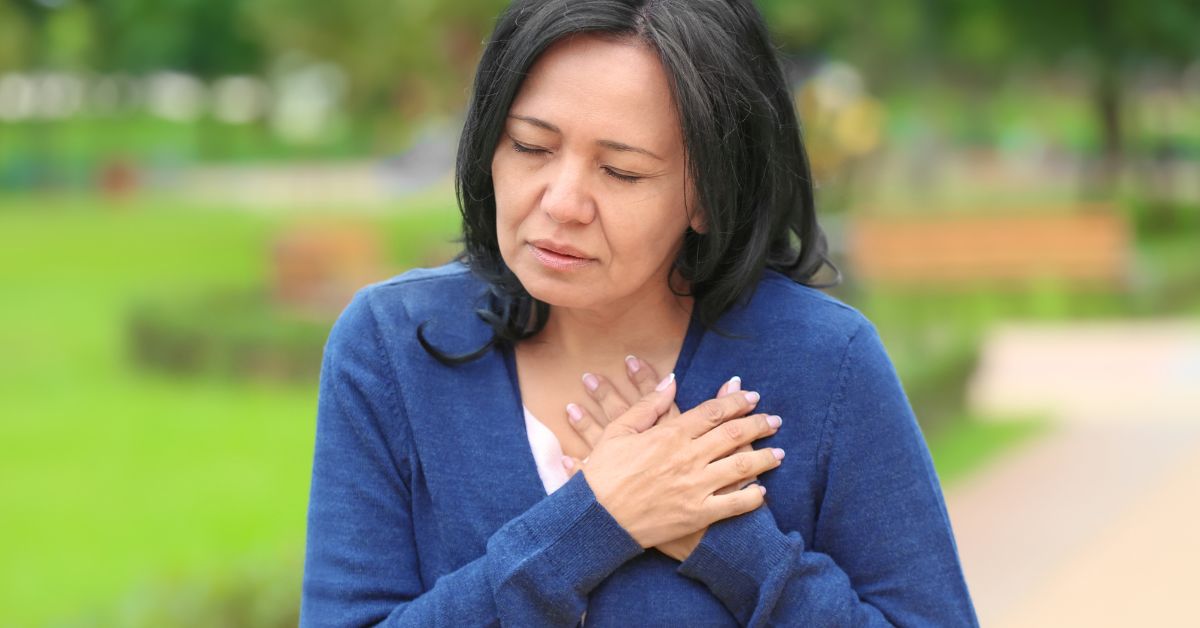If you have ever witnessed someone experiencing cardiac arrest, it can be just as scary for you as it is for them. Immediate intervention is critical, but many people hesitate to help because they don’t know CPR. However, understanding this simpler version, called hands-only CPR,
Cardiac arrest is a sudden malfunction of the heart, which causes an irregular heartbeat. That irregular heartbeat, also called an arrhythmia, doesn’t allow the heart to do its job. This means it stops pumping blood to the brain, lungs and other organs in the body.
By understanding the warning signs of cardiac arrest and learning a simple two-step process, you can be the difference between survival and death in this situation. Always call 911 before performing CPR for guidance and to get them to the nearest emergency department faster.
Recognizing a cardiac event
If you see someone who is experiencing cardiac arrest, your first step should always be to call 911 and get medical professionals on the way. Signs you should look for will vary from person to person. However, in general, the following are signs a person may be experiencing cardiac arrest.
- Grabbing at their chest
- Suddenly losing consciousness
- Stopping breathing completely or gasping for air
Why hands-only CPR?
Receiving CPR greatly increases a person’s chances of surviving sudden cardiac arrest.
But trained professionals are not the only ones who can perform CPR. Anyone can perform simple, lifesaving steps to help by performing hands-only CPR.
In the past, performing CPR meant checking the airway and doing mouth-to-mouth resuscitation in addition to chest compressions. Experts now advise chest compressions alone, also called hands-only CPR, can keep the heart pumping and maintain blood flow for a few minutes until emergency personnel arrives.
Always call 911 first
Immediately begin chest compressions after calling 911. If using a cell phone, it may be possible to perform CPR and receive coaching from the 911 dispatcher at the same time.
Hands-only CPR is recommended for adults and teens. Press hard and fast in the center of the chest with your full body weight. Ideally, compressions should be 100 to 120 beats per minute.
Conventional CPR is more involved, as it includes compressions and mouth-to-mouth breaths. This is still the recommended approach for children.
Why people are hesitant to perform CPR
Many people understand that performing CPR on someone who is experiencing a heart attack or is in cardiac arrest can help save their life. However, people often don’t step up to help when confronted with the situation.
According to the American Heart Association, there are three main reasons someone may be hesitant to perform CPR.
- Not recognizing CPR is needed. If a person is unconscious and breathing abnormally, even if it’s a suspected drug overdose, begin CPR.
- You’re not trained and you worry you might hurt the person. But it’s better to help than do nothing. Don’t be afraid to apply pressure.
- Assisting in emergency situations can be stressful. This is especially true for family members of the person requiring medical assistance.
How we can help
When it comes to cardiac arrest, don’t hesitate. Perform hands-only CPR by calling 911 and then pushing hard and fast with your hands. These two steps can be the difference between life and death.
However, even if hands-only CPR is successful, EMS personnel should transport the person to the nearest emergency department for additional care and evaluation.
Learn about the heart and vascular services we provide at Mercy Health.






